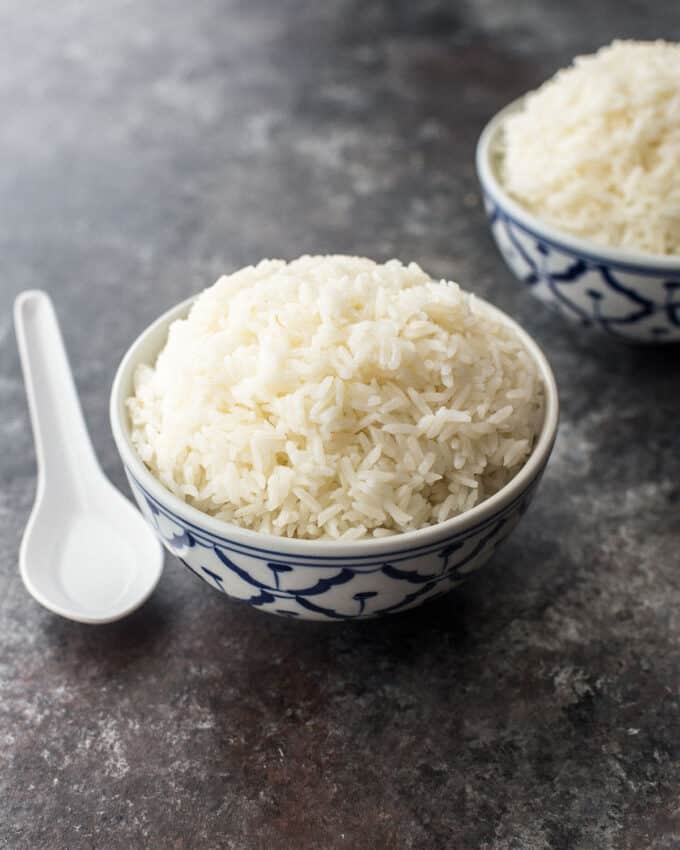How to Cook Jasmine Rice
Cooking jasmine rice can be a daunting task for some, but with the right technique, it can be a breeze. Jasmine rice is a type of long-grain rice that is commonly used in Southeast Asian cuisine. It is known for its fragrant aroma and fluffy texture, making it a popular choice for dishes such as stir-frys, curries, and sushi. In this article, we will guide you on how to cook jasmine rice perfectly every time.

Ingredients
Before we dive into the cooking process, let's gather all the necessary ingredients:
- 1 cup of jasmine rice
- 1 ½ cups of water
- A pinch of salt
Steps
Step 1: Rinse the Rice
The first step to cooking jasmine rice is to rinse it thoroughly. Rinse the rice in a fine-mesh strainer under cold running water until the water runs clear. This step removes any excess starch and dirt that may be present on the rice grains.

Step 2: Soak the Rice
After rinsing the rice, place it in a bowl and cover it with water. Let it soak for 20-30 minutes. This step helps to soften the rice, resulting in a fluffier texture after cooking.

Step 3: Cook the Rice
After soaking the rice, drain the water and transfer the rice to a pot. Add 1 ½ cups of water and a pinch of salt to the pot and bring it to a boil over high heat. Once boiling, reduce the heat to low and cover the pot with a tight-fitting lid. Let the rice cook for 15-18 minutes or until all the water has been absorbed.

Step 4: Let the Rice Rest
After the rice has finished cooking, remove the pot from the heat and let it rest for 5-10 minutes. This step allows the rice to absorb any remaining moisture and become fluffy.
Step 5: Fluff and Serve
After letting the rice rest, remove the lid and fluff the rice with a fork. Serve the rice hot as a side dish or use it as a base for your favorite stir-fry or curry.
Benefits and Drawbacks of Cooking Jasmine Rice
Benefits
- Jasmine rice has a fragrant aroma and a fluffy texture that makes it perfect for a variety of dishes.
- It is a good source of carbohydrates and provides energy to the body.
- Jasmine rice is gluten-free, making it a great alternative for people with celiac disease or gluten intolerance.
Drawbacks
- Jasmine rice has a higher glycemic index than other types of rice, meaning it can cause a spike in blood sugar levels.
- It is a less nutritious option compared to other types of rice, such as brown rice or wild rice.
- The soaking and cooking process can take longer than other types of rice.
FAQ
What is the proper ratio of water to jasmine rice?
The proper ratio of water to jasmine rice is 1 ½ cups of water for every 1 cup of rice.
Can I cook jasmine rice in a rice cooker?
Yes, jasmine rice can be cooked in a rice cooker. Simply follow the same steps as cooking on the stovetop, but instead of using a pot, use a rice cooker.
How long does jasmine rice last?
Jasmine rice can last up to 4-5 days in the refrigerator when stored in an airtight container.
What dishes can I make with jasmine rice?
Jasmine rice is a versatile ingredient that can be used in a variety of dishes, such as stir-frys, curries, sushi, and rice pudding.
Conclusion
Cooking jasmine rice may seem like a daunting task, but with the right technique, it can be a breeze. Remember to rinse and soak the rice before cooking, use the proper ratio of water to rice, and let it rest before fluffing and serving. Jasmine rice is a great option for a variety of dishes and is sure to impress your family and friends.
